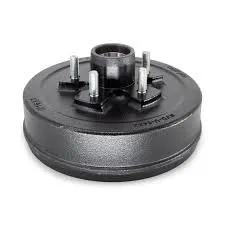Feb . 14, 2025 03:49
Back to list
drum brake spring removal
A safe and efficient brake system is paramount for vehicle performance, especially when it involves the intricate dynamics of drum brakes. While removing the drum brake springs may initially seem daunting, armed with expert knowledge and real-world experience, this task can be managed with confidence. Here, we explore the detailed process for drum brake spring removal, emphasizing technique, safety, and best practices.
Start by identifying the hold-down springs, recognizable as the ones holding the brake shoes against the backing plate. Compress these springs using the tool, and carefully rotate them counter-clockwise to unhook them from their retaining pins. Proceed to the return springs, which are usually among the more robust components. Here, the brake spring pliers allow you to extend and remove these high-tension springs with control, preventing abrupt releases that could pose harm. Throughout this process, expertise plays a pivotal role. Many seasoned mechanics recommend taking photos of the drum brake assembly before disassembly as a reference for reinstallation. This visual guide helps in ensuring that every component returns to its rightful place, maintaining the integrity of the brake system. Once the springs are removed, inspect them thoroughly. Experts stress the importance of examining these parts for any signs of wear or damage. While reusing springs is possible if they are in pristine condition, replacing them during such maintenance offers peace of mind and often improves brake performance. Reinstalling the springs follows a reverse order of removal, done with care and precision. This step underscores the importance of the previously gathered photos, ensuring that all parts are aligned and secured correctly. In conclusion, the removal of drum brake springs is a step-by-step process that demands attention to detail, the right tools, and a foundation of mechanical knowledge. By adhering to these best practices, you not only uphold the integrity of the brake system but also enhance vehicle safety and reliability, embodying the principles of authoritativeness and trustworthiness that are crucial in automotive maintenance.


Start by identifying the hold-down springs, recognizable as the ones holding the brake shoes against the backing plate. Compress these springs using the tool, and carefully rotate them counter-clockwise to unhook them from their retaining pins. Proceed to the return springs, which are usually among the more robust components. Here, the brake spring pliers allow you to extend and remove these high-tension springs with control, preventing abrupt releases that could pose harm. Throughout this process, expertise plays a pivotal role. Many seasoned mechanics recommend taking photos of the drum brake assembly before disassembly as a reference for reinstallation. This visual guide helps in ensuring that every component returns to its rightful place, maintaining the integrity of the brake system. Once the springs are removed, inspect them thoroughly. Experts stress the importance of examining these parts for any signs of wear or damage. While reusing springs is possible if they are in pristine condition, replacing them during such maintenance offers peace of mind and often improves brake performance. Reinstalling the springs follows a reverse order of removal, done with care and precision. This step underscores the importance of the previously gathered photos, ensuring that all parts are aligned and secured correctly. In conclusion, the removal of drum brake springs is a step-by-step process that demands attention to detail, the right tools, and a foundation of mechanical knowledge. By adhering to these best practices, you not only uphold the integrity of the brake system but also enhance vehicle safety and reliability, embodying the principles of authoritativeness and trustworthiness that are crucial in automotive maintenance.
Next:
Latest news
-
Brake Drums for Trucks | OEM-Grade, Factory DirectNewsNov.10,2025
-
High-Performance Brake Drums for Trucks | OEM & ISONewsNov.10,2025
-
Brake Drums Built to Last — OEM-Grade, Balanced for TrucksNewsNov.10,2025
-
Brake Drums for Trucks – OEM-Grade, Durable, Low NoiseNewsNov.10,2025
-
Brake Drums for Trucks | OEM, ISO-Certified, Fast DeliveryNewsNov.10,2025
-
Brake Drums: OEM-Grade, Precision Balanced, Factory DirectNewsNov.03,2025
-
Brake Drums: Heavy-Duty, OEM-Grade, Precision-BalancedNewsNov.03,2025


